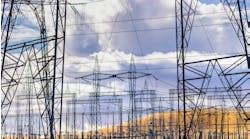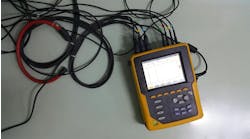The U.S. House of Representatives Committee on Homeland Security has adopted an amendment that would result in a comprehensive assessment of actions necessary to expand and strengthen the capabilities of the electrical power system to prepare for, respond to, mitigate, and recover from a natural disaster or cyberattack. The Payne amendment is backed by the National Electrical Manufacturers Association (NEMA).
Offered by Rep. Donald Payne, Jr. (D-NJ) to HR 3696 National Cybersecurity and Critical Infrastructure Protection Act and approved by voice vote, the amendment directs the National Research Council to conduct a study on the resiliency and reliability of the nation’s power grid and related issues. The committee is chaired by Michael T. McCaul (R-TX).
“Cyber threats are a major challenge as we transition to a modern electric grid,” said NEMA President and CEO Evan R. Gaddis. “NEMA commends Chairman McCaul, Congressman Payne, and members of the Homeland Security Committee for adopting this important amendment.”
Cybersecurity is only one threat facing the grid. Recent events such as Superstorm Sandy serve as a reminder that the grid is vulnerable to naturally-occurring events. A 2013 report released by the Executive Office of the President estimates that nationwide the annual cost of weather-related grid outages averages between $18 and $33 billion.
Additionally, during today’s markup, Rep. Eric Swalwell (D-CA) raised with the committee a February 4, 2014, Wall Street Journal article detailing a physical attack on a transmission substation in California in 2013 in which multiple snipers armed with AK-47s disabled 17 high-voltage transformers.
Rep. Swalwell’s comments highlight the breadth of threats that face the grid and the need for technologies that can help the grid survive such incidents, as occurred in this case.
Many of the same technologies that can make the system more resilient and more reliable serve to increase its everyday energy efficiency, power quality, and cost-effectiveness as well.
Across the country, these technologies are being applied to the electric grid today as part of grid modernization efforts. Bloomberg New Energy Finance has determined that U.S. utilities spent $9.4 billion on Smart Grid technology in 2011-2012. McKinsey projects the potential value of a fully developed Smart Grid by 2019 to be $130 billion.
Still, numerous barriers remain to transforming the grid into the truly reliable, resilient, and efficient machine that our society needs and this study would identify such barriers.
“The Payne amendment is essential to giving decision makers and the American public the information they need to make informed choices about the future of the electric grid,” Gaddis said.


